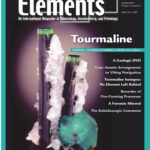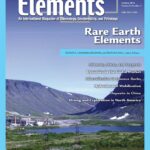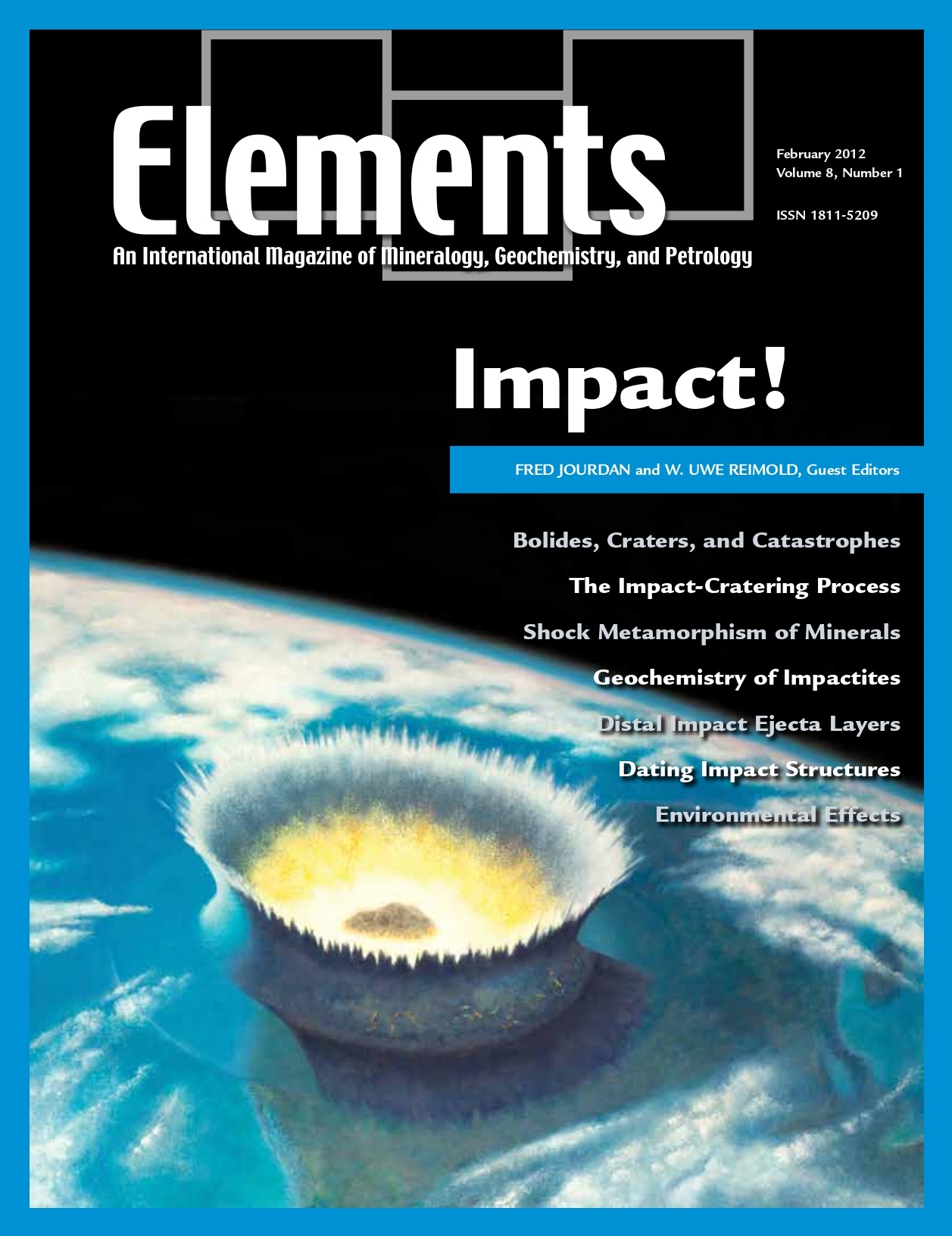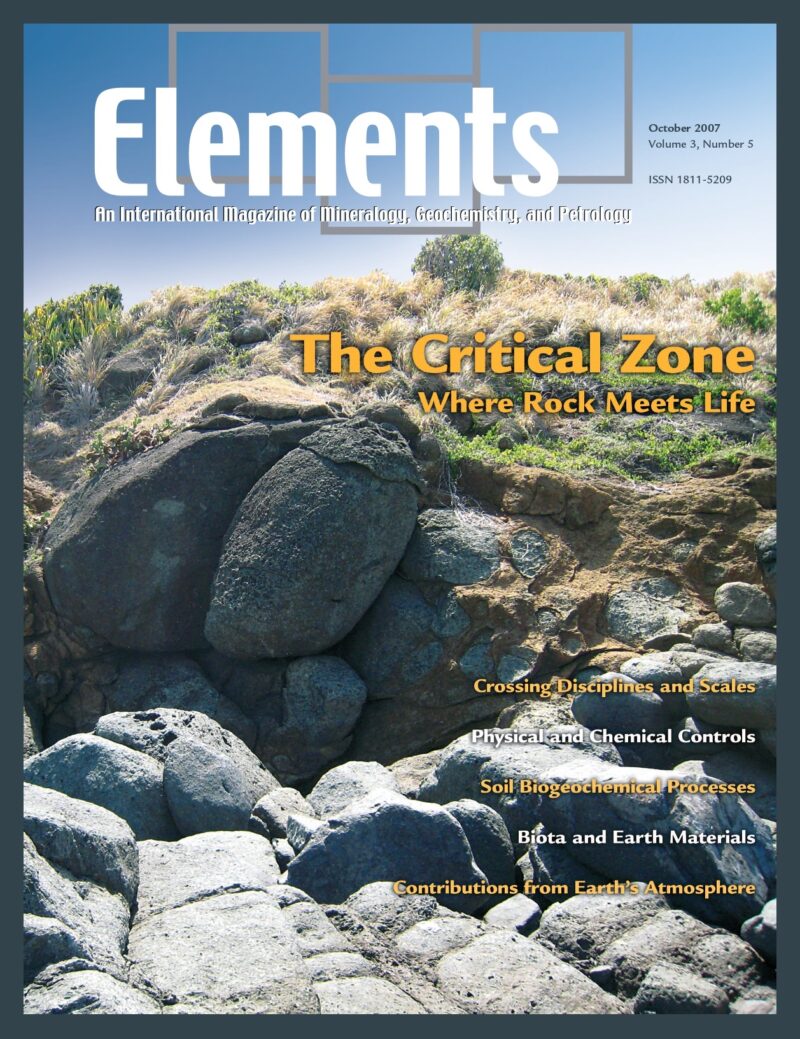
Tourmaline, October 2011, Vol. 7, No. 5
June 28, 2024
Rare Earth Elements, October 2012, Vol. 8, No. 5
June 28, 2024Impact!, February 2012, Vol. 8, No. 1
$20.00
Impact processes are central to the formation and evolution of the Solar System and the modification of planetary surfaces. On Earth, asteroid impacts played a critical role during Earth history; they delivered the constituents of our planet, were responsible for the formation of major ore deposits, and affected life on Earth.
Impact!
February 2012, Vol. 8, No. 1
Impact processes are central to the formation and evolution of the Solar System and the modification of planetary surfaces. On Earth, asteroid impacts played a critical role during Earth history; they delivered the constituents of our planet, were responsible for the formation of major ore deposits, and affected life on Earth. Studying impacts and their effects is a very active field at the crossroads of many scientific disciplines, from mineralogy to environmental science. This issue focuses on the mineralogical, geochemical, and petrological aspects of terrestrial impact structures, and in particular on the latest developments in the relevant fields.
Why You’ll Love Elements Magazine:
- Expert Contributors: Articles written by renowned researchers in the field of geoscience.
- Engaging Content: Join a community of readers who are passionate about Elements.
- Exceptional Quality: Each issue is printed on high-quality paper with stunning visuals and detailed illustrations that bring complex scientific concepts to life.
Order your copy of the February 2012 issue of Elements magazine today and discover the impact!
Related products
-
The Critical Zone, October 2007, Vol. 3, No. 5
$20.00The Critical Zone (CZ) encompasses all fluid, mineral, gaseous, and biotic components from the outer envelope of vegetation down to the lower limit of groundwater. It supports much of life on Earth.
-
Medical Mineralogy And Geochemistry, December 2007, Vol. 3, No. 6
$20.00Medical mineralogy and geochemistry is an emergent, highly interdisciplinary field concerned with both normal and pathological interactions between minerals or amorphous inorganic solids and biomolecules or cells within the human body, and the transport and fate of prions and protein toxins in the soil environment. Prior research has, appropriately, focused on the complex genetic and molecular biological aspects, but there is a growing recognition of the vital need for understanding the surface and bulk properties and reactivities, especially at the challenging nanoscale characteristic of biomacromolecules and biominerals.
-
Phosphates And Global Sustainability, April 2008, Vol. 4, No. 2
$20.00Phosphorus is a unique element: it is essential to the existence of all living forms, and as such controls biological productivity in many terrestrial and marine environments; but when in excess, it leads to uncontrollable biological growth and water-quality problems. This has become a common environmental issue, resulting from our careless use of phosphorus in agriculture, yet phosphate ore deposits, from which fertilizers are produced, are a finite natural resource.




